Self-Sufficiency
Comprehensive Guide to Firewood: Types, Storage, and Tips for a Warm and Efficient Fire
As winter’s chill descends upon us, the allure of a crackling fire transforms our homes into sanctuaries of warmth and comfort. But to bask in the glow of a roaring blaze, you need a reliable stash of well-seasoned, expertly split firewood. In this comprehensive guide, we’ll ignite your knowledge on choosing top-notch firewood, reveal the perks of log splitting, explore various splitting techniques, share storage wisdom, and teach you the art of seasoning firewood.
Table of Contents
Firewood 101: Fueling the Flames
Firewood—nature’s gift of fuel for our fireplaces, wood stoves, and outdoor fire pits—originates from various trees, including oak, maple, birch, and pine. But not all wood is created equal. The finest firewood is dry, dense, and burns with satisfying heat and minimal smoke. Let’s delve into selecting the perfect firewood for your home.
Not only is firewood a renewable resource, but it’s also carbon-neutral, making it an eco-friendly choice for heating your home. Unlike fossil fuels, burning firewood doesn’t contribute to harmful greenhouse gas emissions, allowing you to stay cosy and reduce your carbon footprint at the same time.
Firewood Selection: Separating the Best from the Rest
Hardwoods vs. Softwoods
To enjoy a blazing fire that burns hot and clean, opt for hardwoods like oak, maple, and birch. Their high density and heat output make them ideal, whereas softwoods like pine and spruce excel as kindling due to their effortless ignition. Remember, green or unseasoned wood will disappoint with lower heat and more smoke, leading to creosote buildup in your chimney.
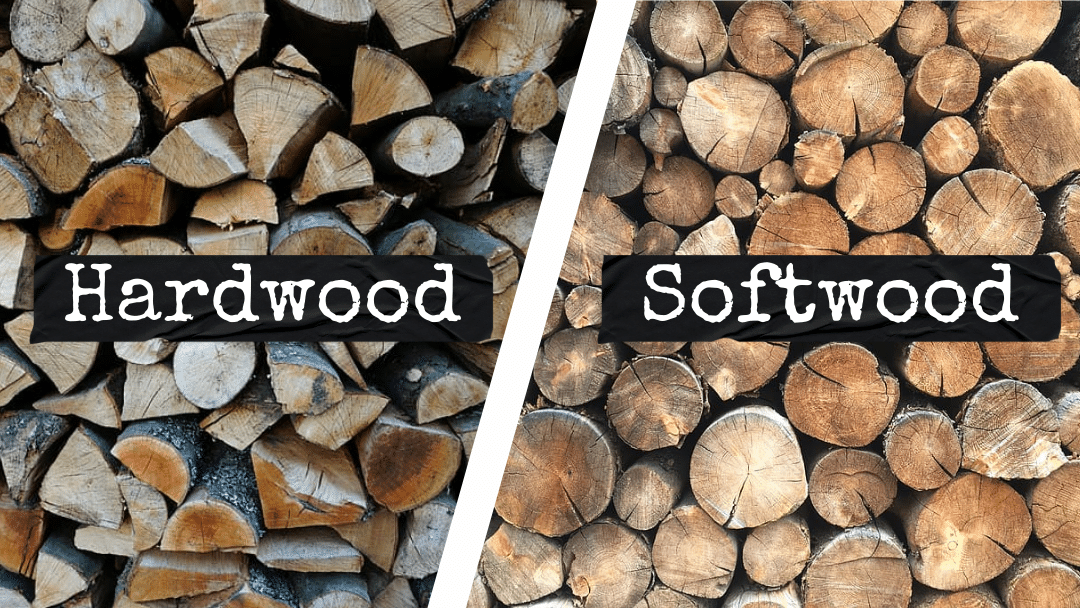
Regional Recommendations
When picking out firewood, one smart move is to pay attention to the local abundance. For example, up North in Scotland and Northern England, you’re likely to stumble upon an ample supply of ash and oak. Meanwhile, the Southern regions are richer with beech. Having this knowledge of what’s locally available not only positions you to make more sustainable decisions but also bolsters local businesses.
The Art of Splitting: Reaping the Rewards
Splitting firewood offers numerous benefits, such as easier handling, quicker seasoning, and better burning. By exposing the wood to air and increasing its surface area, you’ll have a more manageable, faster-drying, and efficient fuel source.
Expert Tips on Splitting
Splitting firewood can seem like a formidable task, particularly for novices. Here, however, are a few expert pointers to simplify the process:
Opt for a splitting axe over a chopping axe. The former is crafted to split wood along its grain, while the latter is designed for cutting across it. Even better, consider using an electric log splitter to streamline the process.
Target the peripheries of the log rather than its centre. This technique demands less effort and enhances the chances of achieving a successful split.
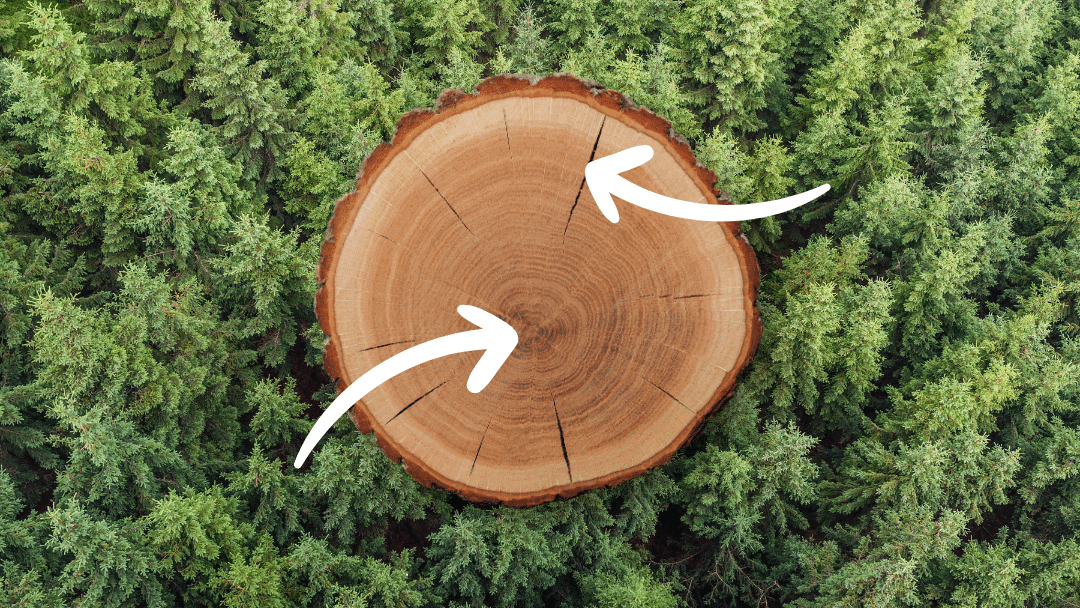
Prioritize safety! Ensure you are wearing safety glasses and robust footwear when undertaking wood-splitting tasks. This approach will provide both protection and peace of mind during your firewood preparation.
Splitting Techniques: Axe, Maul, or Log Splitter?
There’s more than one way to split firewood. Whether you wield a traditional axe, a wedge-shaped maul, or a time-saving log splitter, you’ll find a method that suits your needs and resources.
Storage Smarts: Keep your Firewood Dry and Ready
Storing your firewood correctly is crucial for maintaining its dryness and burn readiness. Aim for a well-ventilated, covered area raised off the ground to avoid moisture and promote air circulation. Stack your firewood in a criss-cross pattern for maximum airflow.
Storing firewood extends beyond the mere stacking of logs. A well-structured pile of firewood can season more promptly and burn with greater efficiency. Here’s how to craft the ideal stack:
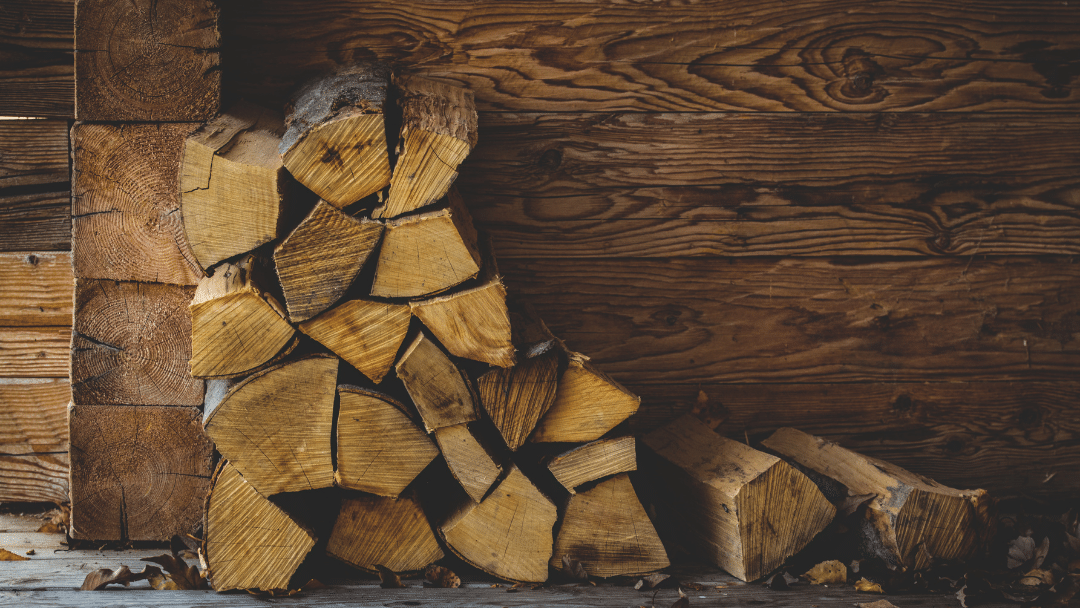
Elevate your stack off the ground. This measure aids in circumventing moisture absorption from the ground and encourages air circulation around the wood.
Shield the top, but leave the sides of your stack exposed. This strategy protects the wood from precipitation yet still permits air to flow freely, accelerating the seasoning process.
Refrain from stacking firewood against your home or other structures. Such a practice can draw pests and poses a potential fire hazard.
Seasoning Secrets: The Key to Optimal Burning
Seasoning your firewood—allowing it to dry before burning—is essential for efficient combustion and preventing creosote buildup. To achieve perfectly seasoned firewood, split it into smaller pieces and store it in a dry, well-ventilated space for at least 6 months to a year.
Understanding the Seasoning Process
Grasping the seasoning process is a crucial part of preparing for a cosy, efficient fire. Here’s what you need to take into account:
The time factor is significant. Hardwoods require a longer seasoning period, often demanding at least a year, whereas softwoods can be adequately seasoned in just six months.
Moisture content is another key element. Ideally, seasoned firewood should have a moisture content of less than 20%. Using a moisture meter can facilitate this verification process.
Storage, as previously mentioned, also impacts the seasoning process. Firewood that is properly stacked, covered, and ventilated seasons more rapidly, ensuring a quicker path to those warm, inviting fires.
Kindling Conundrums: Choosing the Right Wood
For kindling, dry softwood timber such as pine or cedar is your best bet. Their resinous and fibrous nature ensures easy ignition and a rapid burn.
Kindling Creation: Splitting Made Simple
Transform logs into kindling with an axe or a kindling-specific tool. For a fast, efficient method, try a log splitter. We offer a range of manual and electric log splitters perfect for the task. Alternatively, the Smart Splitter, a manual log splitter, makes quick work of splitting kindling and knotty logs using a drop weight and guide pole.
Building the Perfect Fire
Expert Guide to Fire Building
The art of perfect fire creation extends beyond simply tossing a handful of logs into the fireplace. Here lies an expert’s blueprint for crafting the quintessential fire:
Begin your journey with an amalgamation of hardwoods and softwoods. The swift ignition of softwoods paves the way for your fire’s robust beginning, while the steadfast burn of hardwoods ensures its prolonged life.
The prelude to your fire lies in the kindling. Smaller fragments of wood, which catch fire more swiftly than their larger counterparts, provide the initial spark. As the kindling dances with flames, larger pieces of wood join this warm ballet.
A key chapter in this fiery narrative is ensuring ample ventilation. Crafting strategic gaps between the logs invites air to circulate, fostering a hotter, cleaner burn.
Above all, the safety curtain must always be drawn. Employ a fire screen, ensure children and pets maintain a respectful distance, and let not a fire be left unattended. Your vigilance will ensure the fire remains a charming spectacle rather than a hazardous event.
Fireplace Maintenance
Regular upkeep of your wood burner or fireplace is the secret to achieving more efficient, safer fires. Consider these maintenance tips:
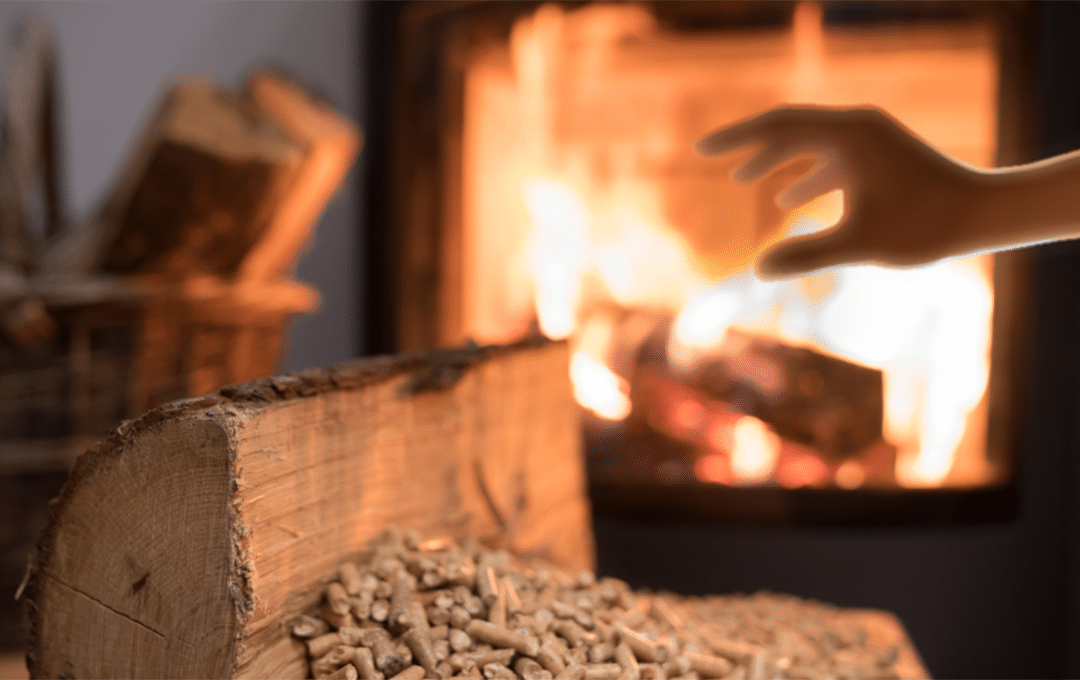
First and foremost, make it a habit to clear out ash regularly. While a thin layer of ash can help in sustaining a fire, too much can snuff out the flames.
Secondly, be vigilant of creosote accumulation. This combustible substance can accumulate in your chimney, turning it into a potential fire risk. To counter this, consider scheduling a chimney inspection and cleaning annually.
Finally, ensure effective ventilation. Your chimney or flue should be proficient at directing smoke upwards and out of your home. If you observe smoke infiltrating your room, you may have a blockage, and it could be time to call in professional maintenance.
Firewood Mastery for a Cosy Home
In the end, well-prepared kindling is the secret to a swift, safe, and satisfying fire. Whether you choose an electric or manual log splitter or prefer the classic axe, investing time and effort into your firewood supply will reward you with a warm, welcoming hearth all winter.
Log burners offer an enchanting alternative to traditional heating methods, providing a sustainable way to stay warm and comfortable while reducing our impact on the environment. The crackle of the firewood and the warmth it provides are just the beginning; log burners also offer a sense of connection to nature and the beauty of the natural world.
By using firewood as a fuel source, log burners provide an eco-friendly option that is renewable and sustainable. The flames’ rhythmic flow and the embers’ comforting glow create an atmosphere of calm and serenity, a peaceful retreat from the harshness of the winter world outside.
With a log burner, you can transform your home into a sanctuary of warmth and comfort, where the beauty of the natural world meets the cosiness of the hearth. The enchantment of the fire and the eco-friendliness of the fuel source come together to create a sense of well-being and sustainability that is truly unmatched.
FAQs (Frequently Asked Questions)
How can I determine if firewood is well-seasoned?
To check if firewood is well-seasoned, look for cracks and splits on the ends of the logs. Seasoned wood is lighter in weight and makes a hollow sound when two pieces are struck together.
Can I burn green or unseasoned wood in my fireplace?
Burning green or unseasoned wood is not recommended as it produces more smoke and less heat and can lead to creosote buildup in your chimney. It’s best to use well-seasoned firewood for optimal burning.
What is the ideal length for firewood?
The ideal length for firewood is around 16 inches (40 centimetres). This length is suitable for most fireplaces, wood stoves, and outdoor fire pits.
How should I stack my firewood for proper airflow?
To promote maximum airflow, stack your firewood in a criss-cross pattern. This allows air to circulate freely and aids in the drying process.
Can I burn any type of wood in a log burner?
While log burners can burn various types of wood, it’s recommended to use hardwoods like oak, maple, and birch for longer-lasting and cleaner-burning fires.

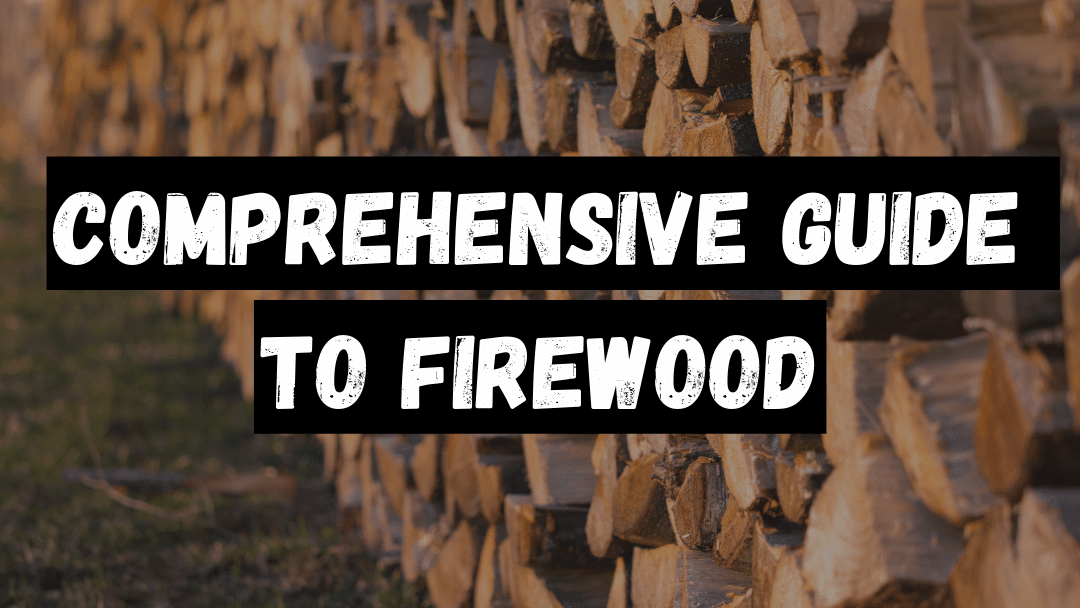
I Read that birch should be avoided due to its oily nature causing flue build up of contaminants.